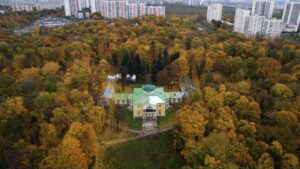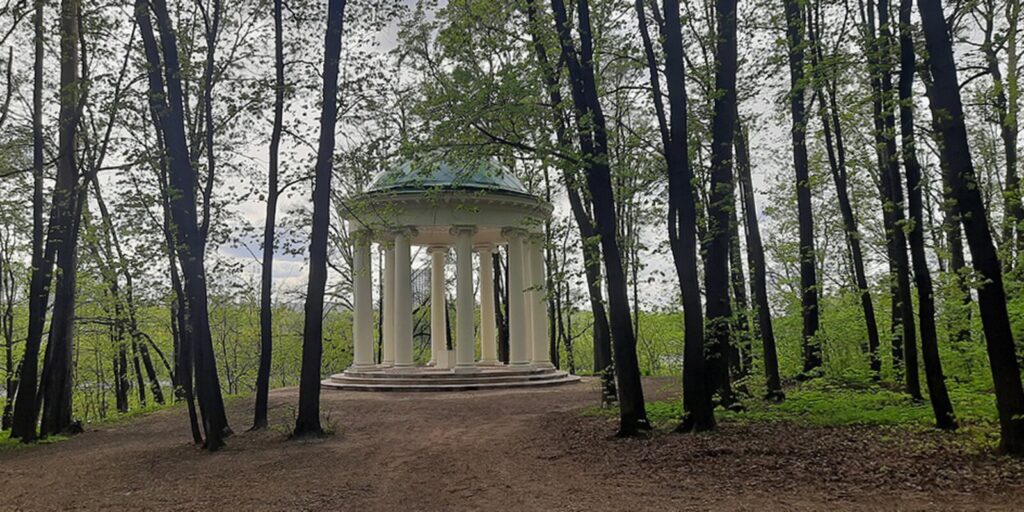Stroganov Estate
in Brattsevo

Brattsevo is a manor complex on the Skhodnya River in the historical Brattsevo district of the North–Western Administrative District of Moscow. This is an example of Russian architecture of the classical era with elements of the Palladian style. There were representatives of the Romanov, Zubov, Khitrovo, Naryshkin, Stroganov, Apraksin and Shcherbatov families among the owners of Brattsevo since the 17th century. The architectural ensemble has been received/ given the status of a cultural heritage site of Russia. The mention of the first buildings on the site of the Brattsevo Estate dated back to the 17th century. So, the small and poor village of Brattsevo became the property of Boyarin Bogdan Matveevich Khitrovo in 1657. He was a confidant of Tsar Alexei Mikhailovich. B.M. Khitrovo managed the Armory and the Grand Palace. He was engaged in the improvement of the territory of Brattsevo. On his initiative the stone Church of the Intercession of the Blessed Virgin and a yard with household facilities were built there. Since 1770, the Estate belonged to A.K. Naryshkin’s nephew, Count Alexander Sergeyevich Stroganov. He was an educator and philanthropist, the president of the Imperial Academy of Arts, who was engaged in «projects of decorating the capital and cities». However, the Count seldom visited Brattsevo himself. Stroganov gave the Estate to his wife, Ekaterina Trubetskaya, who left him for the sake of the former favourite of Catherine the Second, I.N. Rimsky-Korsakov. In the last quarter of the 19th century, a red-brick water tower (building 7), a greenhouse and a cellar appeared in the territory of Brattsevo. A little earlier, a wooden apartment house was built along the access linden alley on the side of the main (eastern) facade (building 9). At that time the Estate belonged to Prince N.S. Shcherbatov and his wife S.A. Apraksina. N.S. Shcherbatov was one of the first heads of the State Historical Museum in Moscow and he headed it until March, 1921. The Bolshoy and Maly bridges, the northern (building 4), central (building 2) and southern (building 3) wings of the farmyard, as well as the vegetable storage building (building 1) have been preserved in the territory of the Estate. After the revolution, a hospital was located in the Estate. In 1936 a rest house was located in the Brattsevo Estate. At that time, according to the project of Architect Alexander Varshaver, side, one-story wings were attached to the building and the colonnades at the side entrances were glazed. From the late 1940s to the late 1950s, the building was under the jurisdiction of the Ministry of the Maritime Fleet of the USSR, and since 1959 it was under the jurisdiction of the Ministry of Health of the RSFSR. During the construction of the Moscow Ring Road in 1960 the historical territories of the Brattsevo Estate were divided. The part of the park and the cloth factory remained outside the highway. In 1980, the village of Brattsevo was demolished. The picturesque Estate remains one of the main attractions of the North-Western Administrative District of Moscow. In 2021, a comprehensive restoration of the vegetable storage in the Brattsevo Estate began.
Address: Moscow, Svetlogorsky proezd, 13

